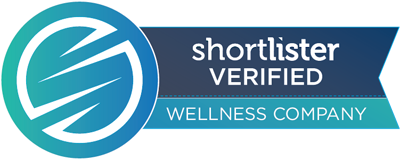 The stigma around mental health in the workplace is fading, and for a good reason. Just as we all share varying degrees of physical wellbeing, so too do we share changes in our mental health And while employers are increasingly doing more to ensure that their employees are physically healthy, there remain important steps they can take to improve employee mental health.
The stigma around mental health in the workplace is fading, and for a good reason. Just as we all share varying degrees of physical wellbeing, so too do we share changes in our mental health And while employers are increasingly doing more to ensure that their employees are physically healthy, there remain important steps they can take to improve employee mental health.
According to a Deloitte report, 84% of employees have experienced physical, psychological, or behavioral symptoms of poor mental health where work was a contributing factor. The economic impact of this is staggering. Depression is thought to count for up to 400 million lost workdays annually, and mental health and substance abuse cost US businesses over $80 billion every year. It goes without saying that investing in mental health initiatives is imperative. From increased absenteeism to turnover, the costs for your business are too high to ignore.
Emphasizing mental health as a critical element of your wellness program is a good starting point. Despite significant progress, mental health and emotional wellness remain trickier to discuss in a workplace setting than physical wellbeing. Any discussion around mental health is challenging as it remains an intensely personal topic for many people, and therefore how you incorporate it into your wellness program requires careful consideration and sensitivity. With that in mind, here are three ways to get you started.
-----
Check out the Guide To Workplace Wellbeing
-----
Start with Work Practices
Picture this: Your team introduces a new mental health initiative as part of the overall wellness program on offer at your company. However, your employees are too stressed and exhausted from their 80-hour weeks and impending deadlines to pay attention to it. Subsequently, its seen as a nuisance, or worse still, hypocritical.
Work norms like long hours and tight deadlines are rarely overtly stated but can be the most significant contributor to the mental health and emotional wellbeing of your employees. If these work practices are out-of-kilter, then they are the first item that needs to be tackled.
Start by suggesting your employees complete a health risk assessment (HRA) which often includes questions about mental health. From there, you can take steps to prevent burnout by, for example, limiting out-of-hours work and encouraging reduced email access outside of office hours. Better balance is also achievable when managers set attainable deadlines and spread workloads equally and fairly across employees and teams.
Emphasize Awareness and Education Programs
The lack of awareness and misconceptions around mental health problems continue to persist. In recent years, governments have worked hard to improve public knowledge and attitudes. Companies can learn from this by launching awareness and educational programs that are not only a great way to encourage discussion around mental health, but can also help to de-stigmatize the very illnesses which keep employees silent. Companies can teach employees how to build the necessary vocabulary to seek and offer emotional support. Investing in these programs also shows, as an organization, a collective willingness to change and grow to better support employee’s needs.
Not only is it morally correct, but the potential impact on your organization’s bottom line is considerable. EDF Energy found that the company was losing around £1.5 million in productivity as a result of mental ill-health among its employees. They introduced a training program that taught 1,000 managers to recognize mental ill-health amongst staff and minimize its adverse effects. Not only did the business save an estimated £228,000 per year, but staff morale also increased: The number of employees who claimed to be “happy in my job” jumped from 36 percent to 68 percent.
Encourage Use of Employee Assistance Programs (EAPs)
97% of large American corporations (5,000+ employees) offer employee assistance programs (EAPs) to workers seeking support from a mental health professional. Given the growing prevalence and awareness of mental health issues in the U.S., you would expect a considerable take-up amongst employees. However, a recent EAP industry trends report shows that only 6.9% of the workforce utilize these benefits.
Poor participation is due primarily to not knowing what is available, and employees not self-identifying their need for support. Once again, education and awareness are essential here. Programs should focus on helping employees to understand the symptoms of poor mental health, the level of severity, their lifestyle, and then provide them with the tools to find an intervention that is both meaningful and helpful.
You can also promote your EAP through regular reminders via email, your website or intranet. Ask your EAP for free posters and refrigerator magnets that advertise the EAP’s hours and phone numbers. Finally, make sure that you introduce the EAP to new employees during orientation sessions and emphasize the benefits. There are tools out there that can support these efforts. For example, Sprout At Work can connect directly with your EAP provider to ensure greater visibility of the benefits your company is already paying for and provides an access point for confidential employee support.
There is a clear sense that companies are making progress on removing the stigma attached to mental health at work, and also in the provision of support to help employees with issues. This progress is certainly worth celebrating. However, there is still a lot of work to be done. Incorporating mental health into your wellness program leads to more engaged, happy, and healthy employees with improved morale. It’s a win-win for both your workforce and the bottom line.
